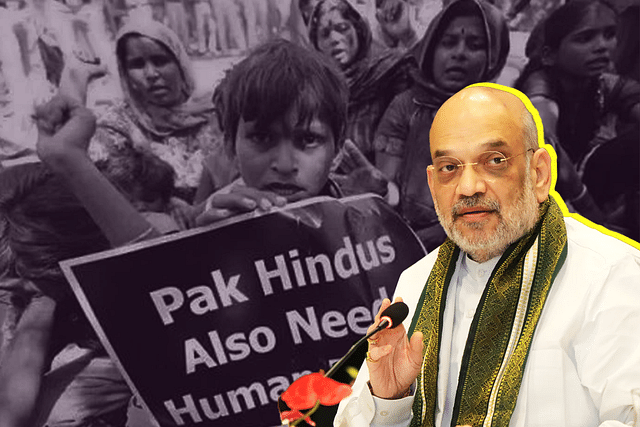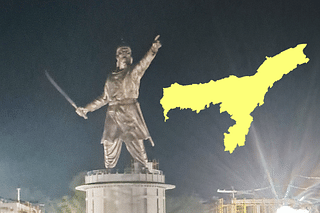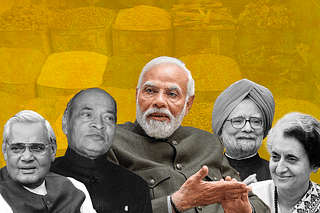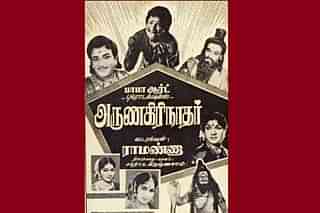Politics
CAA Rules, 2024: These Are The Most Important Takeaways
Ananth Krishna
Mar 12, 2024, 01:52 PM | Updated Mar 13, 2024, 06:24 PM IST
Save & read from anywhere!
Bookmark stories for easy access on any device or the Swarajya app.

The Citizenship (Amendment) Rules, 2024 have been notified, bringing to an end a wait of roughly four years. Here are some major takeaways from the notification of rules:
1. CAA was already in force
The Citizenship (Amendment) Act, 2019 (CAA) was the flagship legislation of the first year of the Modi government, but its full implementation was marred by protests and riots. Simply put, the CAA does three main things:
A. Provides an easier path of citizenship for all who have entered India before 31 December 2014 from Pakistan, Bangladesh and Afghanistan and belong to the Hindu, Sikh, Buddhist, Jain, Parsi or Christian communities.
B. Protects the above-mentioned persons (who entered the country before 31 December 2014 from being treated as illegal migrants under the Citizenship Act, 1955.
C. Eases naturalisation for anyone from the persecuted religious groups from the three countries by reducing the time required for naturalisation from eleven years to five years.
The Act also enables the cancellation of Overseas Citizenship of India (OCI) for violations of the Citizenship Act,1955 or any other law the central government notifies.
Of these, this provision along with point number B was already ‘in force’ both practically and legally since 10 January 2020, the day the Act was brought into force. What was notified on 11 March 2024, is the operational part of points A and C.
2. Fully digital, with two committees to clear applicants
The rules, called Citizenship (Amendment) Rules, 2024 (‘CAA rules’ going forward) create two committees - a District Level Committee (DLC) and a national ‘Empowered Committee’ (EC). The Government has created the Indian Citizenship Online Portal (https://indiancitizenshiponline.nic.in/) which will also increase accountability and transparency for applicants.
The DLC is composed of four central government officers at the district level (chaired by the Senior Superintendent of Posts) and one state government officer, while the Empowered Committee is composed of six central government officers chaired by the Director of Census Operations in a given state, and one state government officer.
3. Concerns of state government choking implementation addressed
An important concern in the implementation of the CAA was the dependency the central government had on state government machinery. Since multiple state governments claimed that they would not implement the Act, the operationalisation of the rules without the cooperation of the state government was in doubt.
This has been completely taken away by constituting committees primarily composed of central government officers in both DLC and EC.
The state government officers in the committee - in the DLC, a representative of the District Collector (of Naib Tahlisdar rank) and in the EC, a representative of the Principal Secretary (Home) or Additional Chief Secretary (Home) - are invitees, and the quorum requirement in both committees ensures that they cannot in any way hamper or block the functioning of the DLC or EC.
The ECs also include intelligence bureau officers, (of the rank of Deputy Secretary) and have the power to conduct ‘any inquiry’ to ascertain the fitness of an applicant for Indian citizenship, thus taking away the requirement of police clearance (which is dependent on State Governments).
The creation of these committees clearly required some creativity from the Ministry of Home Affairs.
4. CAA and its rules will help new refugees from Pakistan, Bangladesh and Afghanistan
Unlike popular perception, the CAA helps citizens who are coming into the country from these nations even today. They can take advantage of the lowered naturalisation requirement of 5 years (as opposed to the normal 11 years) along with the Long Term Visas (LTVs) whose issuance has been institutionalised by the Modi Government.
The cut-off of 31 December 2014 is additional protection for pre-existing migrants and eases their citizenship process as well specifically. However, the naturalisation process through CAA has been eased for those who came to the country after the cut-off date as well.
5. Timing Leaves Nothing To Chance
The implementation of CAA rules was the possible repercussions to law and order. This time around the government, especially the Delhi police, seems well prepared.
Moreover, the full and immediate implementation (including the creation of committees) indicates that the looming Model Code of Conduct has also played a part in the government wishing to operationalise a key piece of its agenda that had been pending from its very first year in office this term.
The Opposition also seems to be crying hoarse because the notification is ‘designed to polarise’ and the ability for mischief is limited considering the impending General Elections.
6. CAA rules correct a historical mistake
The Nehru-Liaquat pact in 1950 limited the ability of refugees from East and West Pakistan to move to India, in exchange for creating supposed protections for minorities in both countries. While India had by then hard-coded this to the Constitution, Pakistan’s legal regime and reality for minorities to this day is filled with persecution.
By operationalising the citizenship process for those who fled to the country and an easier naturalisation requirement for those entering the country, the CAA corrects a historical mistake that was made.
Save & read from anywhere!
Bookmark stories for easy access on any device or the Swarajya app.
Ananth Krishna is a lawyer and observer of Kerala's politics.
Introducing ElectionsHQ + 50 Ground Reports Project
The 2024 elections might seem easy to guess, but there are some important questions that shouldn't be missed.
Do freebies still sway voters? Do people prioritise infrastructure when voting? How will Punjab vote?
The answers to these questions provide great insights into where we, as a country, are headed in the years to come.
Swarajya is starting a project with an aim to do 50 solid ground stories and a smart commentary service on WhatsApp, a one-of-a-kind. We'd love your support during this election season.
Click below to contribute.





